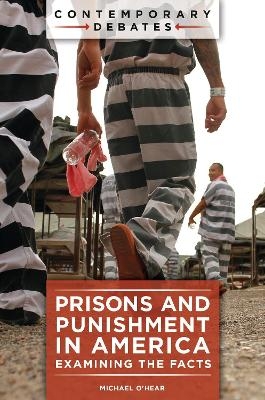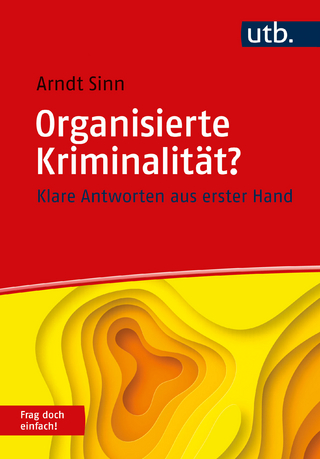
Prisons and Punishment in America
ABC-CLIO (Verlag)
978-1-4408-5542-9 (ISBN)
After three decades of explosive growth, the American incarceration rate is impracticably high. Drawing on leading research in law and the social sciences, this book covers a range of topics in sentencing and corrections in America in a manner that is accessible and engaging for general readers.
Tackling high-level issues in the criminal justice system, it outlines the scale and causes of mass incarceration in the United States. To complement this, it details the roles and relative power of judges and prosecutors, the severity of punishment for drug offenders and white-collar offenders, the abuse of prisoners and the enforcement of prisoner rights, and repeat offending by released prisoners. Readers will better understand the challenges that come with a high incarceration rate, such as the management of mental illness in the criminal justice system, the management of sex offenders, and the impact of parental incarceration on children. Looking ahead, this timely resource also considers prospects for reducing current incarceration levels, the availability and effectiveness of alternatives to incarceration, and the future of capital punishment.
Michael O'Hear is professor of criminal law and procedure at Marquette University Law School. His books include The Failure of Sentencing Reform and Wisconsin Sentencing in the Tough-on-Crime Era.
How to Use This Book
1 American Sentencing—Law and Practice
Q1. Have judges lost their sentencing discretion?
Q2. Do modern-day prosecutors dictate sentences for criminal convictions?
Q3. Are defendants punished for exercising their constitutional right to a trial?
Q4. Do drug offenders get tougher sentences than violent offenders?
Q5. Do white-collar criminals ever get serious prison terms?
Q6. Is capital punishment "dead" in the United States?
Q7. Are the needs and wishes of crime victims disregarded in the sentencing process?
2 Alternatives to Incarceration
Q8. Is probation just a "slap on the wrist"?
Q9. Are so-called intermediate sanctions more effective in reducing recidivism than traditional probation?
Q10. Do drug treatment courts and other problem-solving courts really work?
Q11. Does restorative justice really work?
Q12. Are colonial-style "shaming" sentences an appropriate alternative to incarceration?
Q13. Have fines and other financial penalties in criminal cases dramatically increased since the late 1990s?
3 The Experience and Consequences of Incarceration
Q14. Has imprisonment in the United States gotten too soft?
Q15. Do judges play a significant role in the administration of prisons?
Q16. Does time in prison leave inmates more likely to reoffend?
Q17. Do prisoners have opportunities to work, learn, or otherwise spend their time productively during incarceration?
Q18. Are incidents of violence against inmates and coerced sex common occurrences in prisons?
Q19. Do prisons use solitary confinement too much?
Q20. Do private prisons deliver better results at lower cost than public prisons?
Q21. Are children harmed by the incarceration of a parent?
4 Release and Life after Prison
Q22. Can prisoners still accelerate their release through good behavior and rehabilitative progress?
Q23. Given the high recidivism rate of released prisoners, shouldn't they be held behind bars as long as possible?
Q24. Is it possible for former prisoners to reintegrate fully into society and live a normal life?
Q25. Are most parolees returned to prison for technical violations?
5 Women, Juveniles, and Other Special Offender Populations
Q26. Do female offenders receive preferential treatment when it comes to sentencing and corrections?
Q27. Does the system really hold juveniles accountable for their crimes?
Q28. Are mentally ill offenders able to get the treatment they need through the criminal justice system?
Q29. Do registration, community notification, residency restriction, and civil commitment laws help to reduce the threat posed by sex offenders after their prison terms are completed?
Q30. Should elderly, disabled, and chronically ill prisoners be given "compassionate release"?
6 Causes and Significance of "Mass Incarceration"
Q31. How does the U.S. incarceration rate compare to international and historical norms?
Q32. Did the War on Drugs cause mass incarceration?
Q33. Has mass incarceration helped to reduce crime?
7 Race, Ethnicity, and Punishment
Q34. Are African Americans incarcerated disproportionately in the United States?
Q35. What causes the disproportionate imprisonment of African Americans?
Q36. Are there other racial or ethnic groups who experience disproportionate incarceration?
Q37. What should be done to address racial disparities in incarceration?
8 Public Opinion, Politics, and Reform
Q38. Does public opinion always favor tougher punishment?
Q39. Are the fiscal burdens of mass incarceration changing the politics of punishment?
Q40. What reform measures might best reduce excessive incarceration?
Index
About the Author
| Erscheinungsdatum | 25.09.2018 |
|---|---|
| Reihe/Serie | Contemporary Debates |
| Sprache | englisch |
| Maße | 156 x 235 mm |
| Gewicht | 595 g |
| Themenwelt | Recht / Steuern ► Strafrecht ► Kriminologie |
| ISBN-10 | 1-4408-5542-0 / 1440855420 |
| ISBN-13 | 978-1-4408-5542-9 / 9781440855429 |
| Zustand | Neuware |
| Haben Sie eine Frage zum Produkt? |
aus dem Bereich


